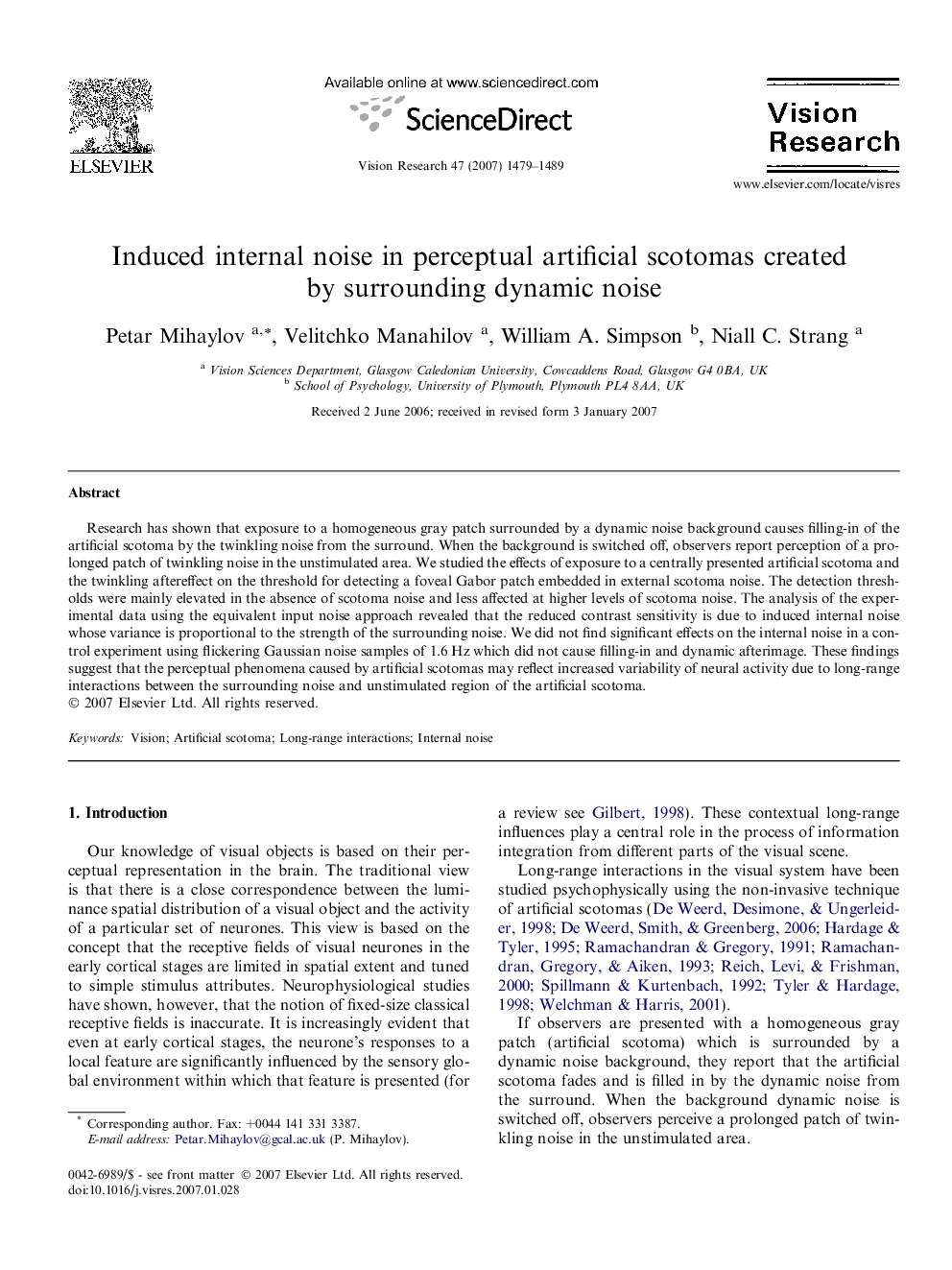| Article ID | Journal | Published Year | Pages | File Type |
|---|---|---|---|---|
| 4035709 | Vision Research | 2007 | 11 Pages |
Research has shown that exposure to a homogeneous gray patch surrounded by a dynamic noise background causes filling-in of the artificial scotoma by the twinkling noise from the surround. When the background is switched off, observers report perception of a prolonged patch of twinkling noise in the unstimulated area. We studied the effects of exposure to a centrally presented artificial scotoma and the twinkling aftereffect on the threshold for detecting a foveal Gabor patch embedded in external scotoma noise. The detection thresholds were mainly elevated in the absence of scotoma noise and less affected at higher levels of scotoma noise. The analysis of the experimental data using the equivalent input noise approach revealed that the reduced contrast sensitivity is due to induced internal noise whose variance is proportional to the strength of the surrounding noise. We did not find significant effects on the internal noise in a control experiment using flickering Gaussian noise samples of 1.6 Hz which did not cause filling-in and dynamic afterimage. These findings suggest that the perceptual phenomena caused by artificial scotomas may reflect increased variability of neural activity due to long-range interactions between the surrounding noise and unstimulated region of the artificial scotoma.
